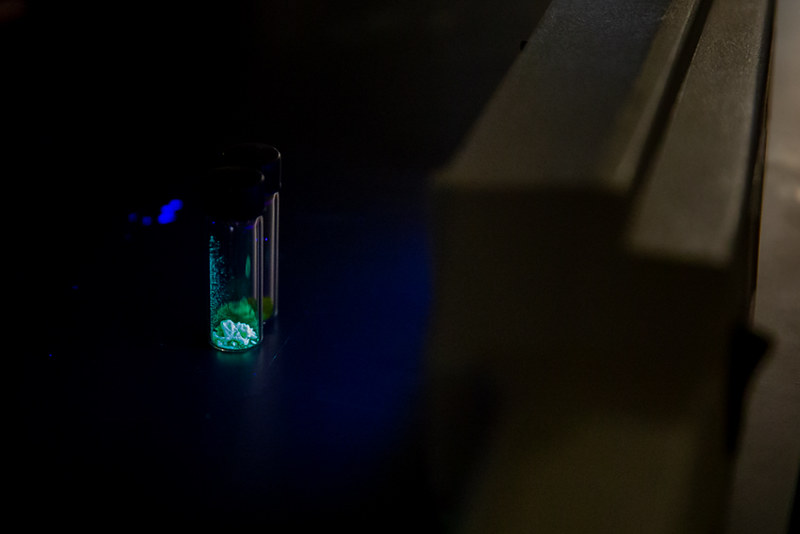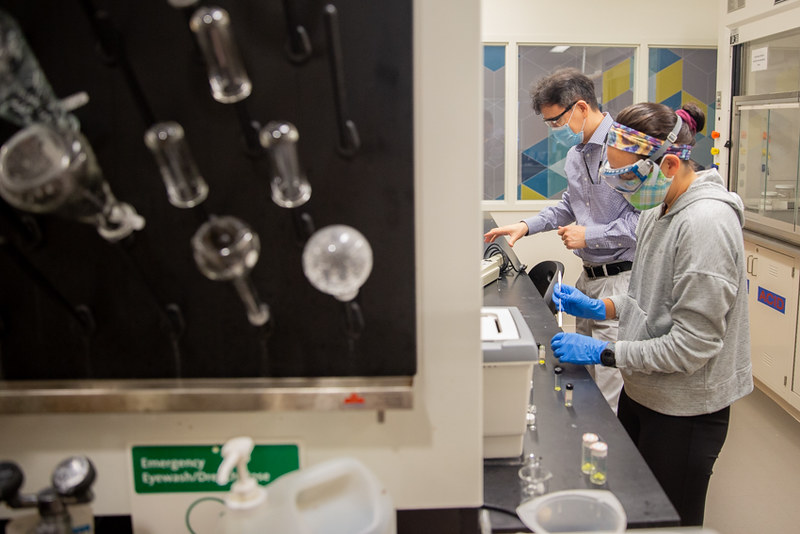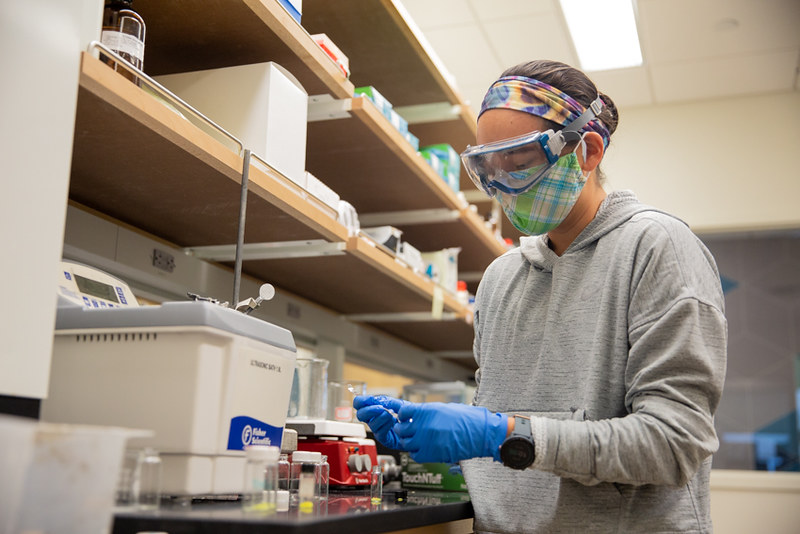Fall 2020 Issue
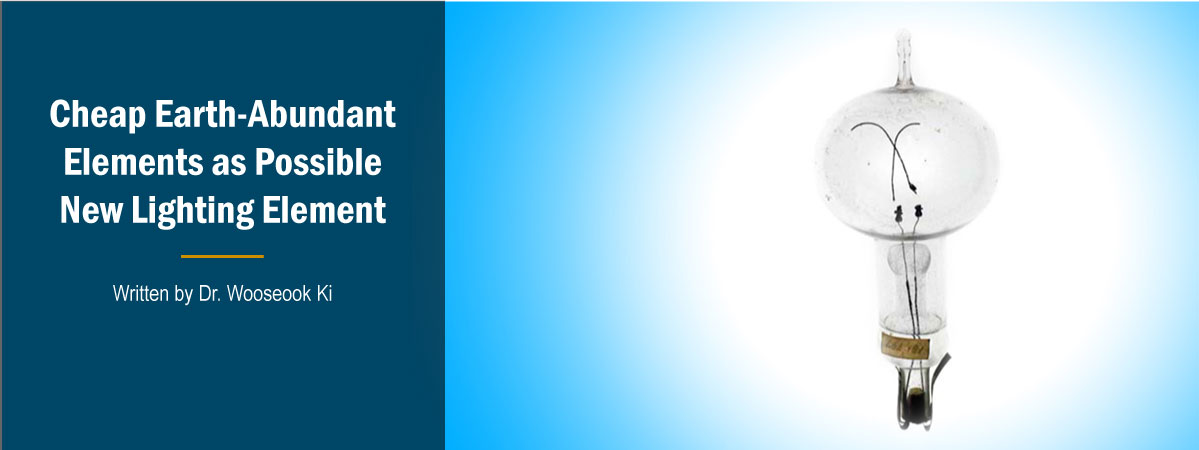
After the invention of incandescent lamps by Thomas Edison in 1878, lighting technology has rapidly evolved to make efficient, cheap light sources. Light-emitting diodes (LEDs) are one of the fastest developing lighting technologies today using semiconductors. In general, semiconductor LEDs are fabricated in a vacuum chamber, which requires high energy and a high vacuum, and limits the size of the device, resulting in high cost. To this end, organic light-emitting technology has been drawn considerable attention to developing efficient, cheap lighting devices. Indeed, OLEDs are used everywhere today and pave the way for new display and lighting technology due to unique advantages over LEDs, such as flexible, excellent tunability, and durable. However, one of the main drawbacks is the use of expensive rare earth elements, such as Ce, Ir, Er, and Re, which are mainly imported from China. Therefore, there are tremendous efforts to make rare-earth free metal complexes for use in OLED applications.
In our research lab, we have started to tackle such problems by using cheap earth-abundant
elements, such as Sn, Bi, and Sb (p-block elements from the periodic table) as potential
phosphors for use in OLEDs. We recently synthesized a new, green tin (Sn) fluoride
complex phosphor, as shown in the figure below.
Our Sn fluoride complex was actually formed by mistake. Kathleen Ngo (senior, Chem/BioChem
major) accidentally placed ammonium hexafluorophosphate (NH4PF6) into a solution.
In fact, for our metal complex system, we don’t need to add salt because our Sn complexes
are neutral (note that NH4PF6 has been generally used to balancing cationic complex).
Surprisingly, we found that PF6‑ ions go through hydrolysis and produce fluoride ion
(F-) ion, resulted in forming a new Sn fluoride complex. This new phosphor shows fascinating
photoluminescence properties. We concluded that fluoride ion bound to Sn metal plays
a significant role in enhancing emission properties.
We further analyzed this complex using various instruments and observed a quite interesting aggregation-induced emission enhancement (AIEE) property- stronger emission in the solid-state but weaker emission in solution. In general, most OLEDs show aggregation-induced quenching, which is a critical problem for OLED devices because they are used in the solid-state. This is the first report observing AIEE in Sn complex to date. This exciting result led us to write a manuscript which was accepted in Chemical Communications, a high impact peer-reviewed chemistry journal. This work was completed through significant collaborations within and outside of Stockton University. We are currently investigating the role of fluorine in our Sn complex system using density functional theory calculations. Ultimately, we like to fabricate an organic light-emitting device.
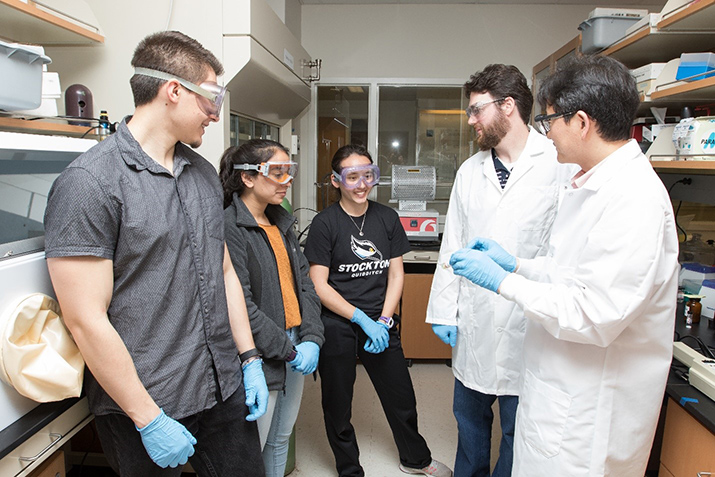
From left: Christopher Kern, Millie Shah, Kathleen Ngo, Dr. Jason Shulman, Dr. Wooseok Ki. (Photo credit: Susan Allen).
As an educator, I have enjoyed mentoring my student research. One of the greatest joys is observing students' enthusiasm and motivation toward their research. Hopefully, they’ll pursue a graduate school education to advance their careers and develop into innovative independent scientists. Students' failures and mistakes in research are a great catalyst for individual learning and pave the way for creating new opportunities. They are all invaluable assets for research.

